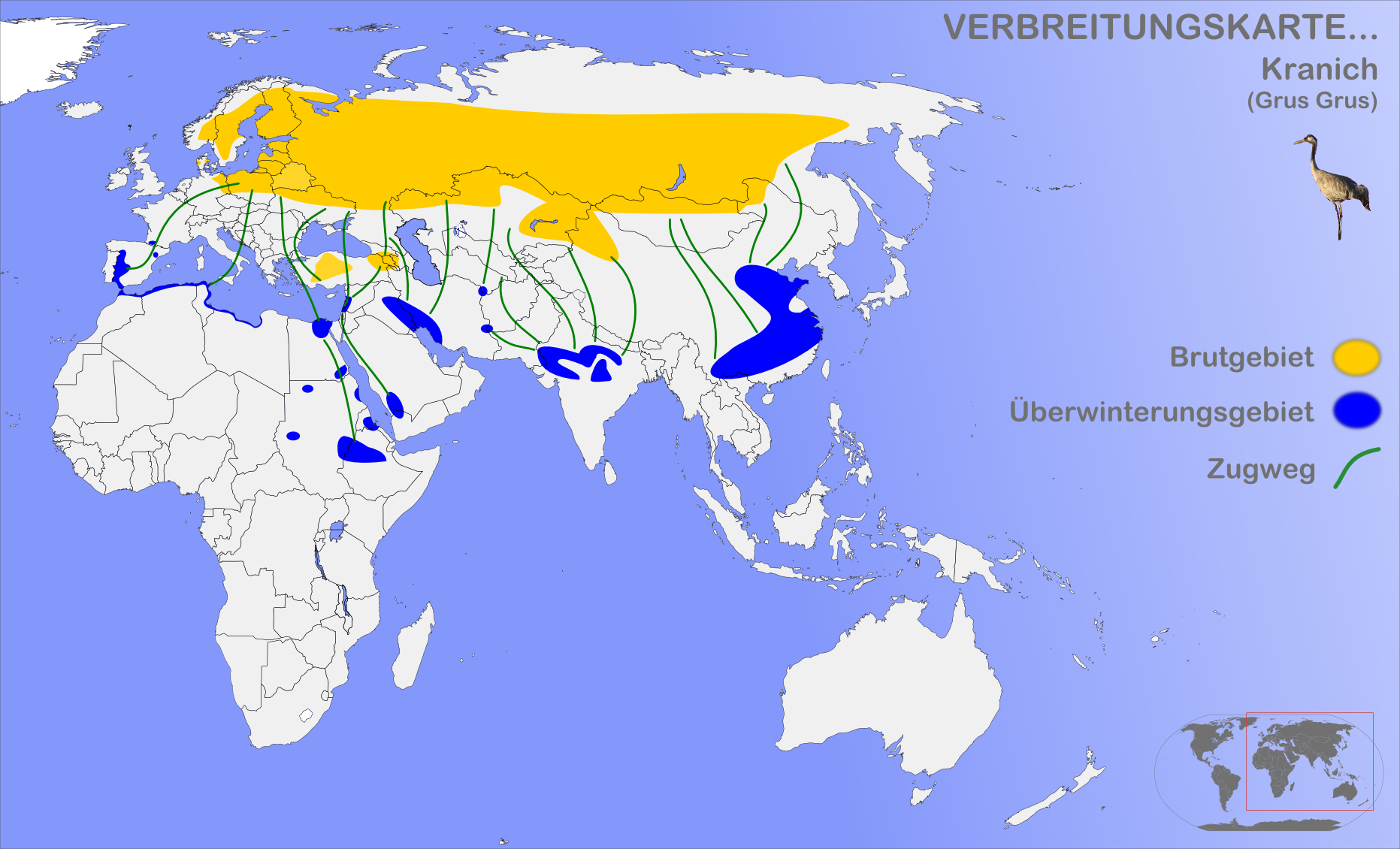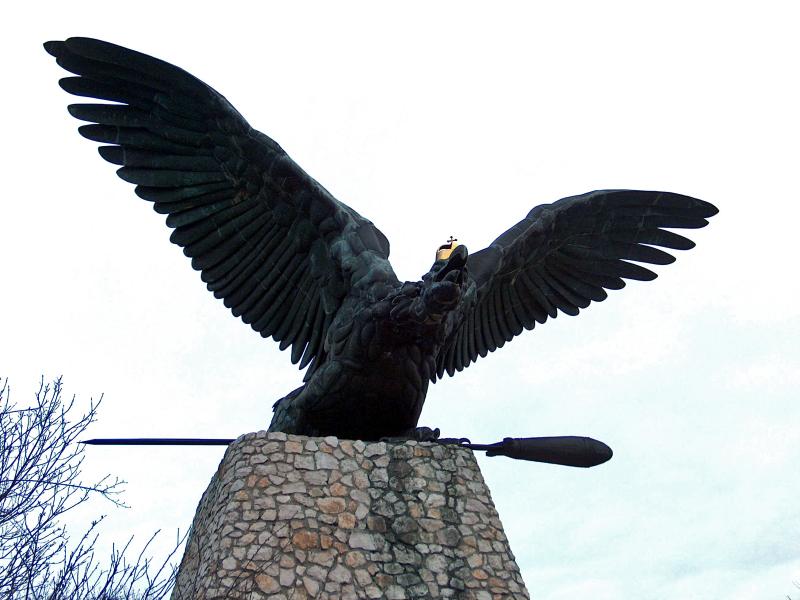|
Dangara Massif Important Bird Area
The Dangara Massif Important Bird Area ( zh, 丹加拉地块重点鸟区) is a 700 km2 upland massif in eastern Khatlon Province in southwest Tajikistan. Description The Important Bird Area (IBA) lies between the Vakhsh and Panj Rivers at an altitude of 550–570 m above sea level, near the city of Kulob. A road and railway running through the middle of the massif connects Kulob with Tajikistan's capital, Dushanbe. The IBA is centred on Dangara Mountain and is characterised by rolling, treeless hills, covered with grassland and agricultural land. The IBA's natural flora is typical of a semi-arid climate and is mainly herbaceous; it begins to grow from mid February, flowering in early spring and beginning to die back from mid May. Birds Previously, the massif was used mainly for autumn and winter pasture. With agricultural development – cereal and legume cropping and the establishment of reservoirs – the area has attracted larger numbers of waterbirds and gran ... [...More Info...] [...Related Items...] OR: [Wikipedia] [Google] [Baidu] |
Grus Grus 1 (Marek Szczepanek)
Grus can refer to * ''Grus'' (genus), a genus of birds in the crane family ** ''Grus grus'', the common crane * Grus (constellation), the constellation "Crane" * Grus (geology), an accumulation of angular, coarse-grained fragments (particles of sand and gravel) resulting from the granular disintegration of crystalline rocks See also * Gruss (other) Gruss may refer to: * 6516 Gruss, a main-belt asteroid * Olaf Gruss, a botanist * Peter Gruss (born 1949), a German developmental biologist * Shoshanna Lonstein Gruss Shoshanna Lonstein-Gruss (born May 29, 1975) is an American writer and fashio ... * GRU (other) {{disambiguation ... [...More Info...] [...Related Items...] OR: [Wikipedia] [Google] [Baidu] |
Reservoir
A reservoir (; from French ''réservoir'' ) is an enlarged lake behind a dam. Such a dam may be either artificial, built to store fresh water or it may be a natural formation. Reservoirs can be created in a number of ways, including controlling a watercourse that drains an existing body of water, interrupting a watercourse to form an embayment within it, through excavation, or building any number of retaining walls or levees. In other contexts, "reservoirs" may refer to storage spaces for various fluids; they may hold liquids or gasses, including hydrocarbons. ''Tank reservoirs'' store these in ground-level, elevated, or buried tanks. Tank reservoirs for water are also called cisterns. Most underground reservoirs are used to store liquids, principally either water or petroleum. Types Dammed valleys Dammed reservoirs are artificial lakes created and controlled by a dam A dam is a barrier that stops or restricts the flow of surface water or underground streams ... [...More Info...] [...Related Items...] OR: [Wikipedia] [Google] [Baidu] |
Finsch's Wheatear
Finsch's wheatear (''Oenanthe finschii'') is a wheatear, a small insectivorous passerine that was formerly classed as a member of the Thrush (bird), thrush family, Turdidae, but is now more generally considered to be an Old World flycatcher of the family Muscicapidae. This 15–16 cm long bird breeds in semi-desert and stony hillsides from Turkey east to Afghanistan and western Pakistan. It is a Bird migration, short-distance migrant, wintering in Egypt, Cyprus and the Greater Middle East. The nest is built in a rock crevice, and 4-5 eggs is the normal clutch. In summer the male Finsch's wheatear is a white and black bird. The white crown, central back and belly contrast with the black face, throat and wings. The tail and rump are white, with an inverted black T giving a pattern like eastern black-eared wheatear, but with a uniformly wide terminal band. The female is brown-grey above, becoming dirty white below. The tail pattern is similar to the male's. Finsch's wheatear ... [...More Info...] [...Related Items...] OR: [Wikipedia] [Google] [Baidu] |
White-throated Robin
The white-throated robin (''Irania gutturalis''), or irania, is a small, sexual dimorphism, sexually dimorphic, migratory passerine bird. The vernacular and genus name ''Irania'' alludes to Iran, its type locality (biology), type locality, while the specific name ''gutturalis'' is Medieval Latin for "of the throat". It breeds in western Asia and overwinters in East Africa. Relationships It was formerly classed as a member of the Thrush (bird), thrush family, Turdidae, but is now more generally considered to be an Old World flycatcher, family Muscicapidae. It, and similar passerine species, are often called chat (bird), chats. Description This species is larger than the European robin, having a length of and a wingspan of . The breeding male has lead-grey upperparts, a black face with a white throat and supercilium, and orange underparts. The tail is black, as is the strong bill. Females are plainer, mainly grey apart from a black tail, hints of orange on the flanks, and some wh ... [...More Info...] [...Related Items...] OR: [Wikipedia] [Google] [Baidu] |
Plain Leaf-warbler
The plain leaf warbler (''Phylloscopus neglectus'') is a species of Old World warbler in the family Phylloscopidae. It is found in Afghanistan, Bahrain, India, Iran, Oman, Pakistan, Russia, Tajikistan, Turkmenistan, United Arab Emirates, and Uzbekistan. Its natural habitat is temperate forests. References plain leaf warbler Birds of Afghanistan Birds of Pakistan plain leaf warbler The plain leaf warbler (''Phylloscopus neglectus'') is a species of Old World warbler in the family Phylloscopidae. It is found in Afghanistan, Bahrain, India, Iran, Oman, Pakistan, Russia, Tajikistan, Turkmenistan, United Arab Emirates, and Uzbe ... Taxonomy articles created by Polbot {{Phylloscopidae-stub ... [...More Info...] [...Related Items...] OR: [Wikipedia] [Google] [Baidu] |
Upcher's Warbler
Upcher's warbler (''Hippolais languida'') is an Old World warbler in the tree warbler genus ''Hippolais''. It breeds in an area from Turkey south and east to Pakistan. It is migratory, wintering in eastern Africa, from Eritrea and Somalia south to Tanzania. This small passerine bird is a species found in semi-desert habitats, frequenting bushy scrub and thickets of tamarisk. Four or five eggs are laid in a nest in bushes and low trees. This is a medium-sized warbler, similar in size to the icterine warbler, with a slightly longer bill and shorter wings and a longer tail. Its frequent tail movement is reminiscent of a '' Sylvia'' warbler or a chat. Its rather grey plumage is similar to the olivaceous warbler, but tail movements are diagnostic. It feeds on invertebrates. Its song is similar to that of other ''Hippolais'' warblers, but distinctive and unmistakable, and entirely different from that of the olivaceous warbler. Ehrenberg's original description of this bird was 'rat ... [...More Info...] [...Related Items...] OR: [Wikipedia] [Google] [Baidu] |
Common Crane
The common crane (''Grus grus''), also known as the Eurasian crane, is a bird of the family Gruidae, the cranes. A medium-sized species, it is the only crane commonly found in Europe besides the demoiselle crane (''Grus virgo'') and the Siberian crane (''Leucogeranus leucogeranus''). Along with the sandhill (''Antigone canadensis'') and demoiselle cranes and the brolga (''Antigone rubicunda''), it is one of only four crane species not currently classified as threatened with extinction or conservation dependent on the species level. Despite the species' large numbers, local extinctions and extirpations have taken place in part of its range, and an ongoing reintroduction project is underway in the United Kingdom. Taxonomy The first formal description of the common crane was by the Swedish naturalist Carl Linnaeus in 1758 in the tenth edition of his ''Systema Naturae'' under the binomial name ''Ardea grus''. The current genus ''Grus'' was erected by the French zoologist Mathuri ... [...More Info...] [...Related Items...] OR: [Wikipedia] [Google] [Baidu] |
Saker Falcon
The saker falcon (''Falco cherrug'') is a large species of falcon. This species breeds from central Europe eastwards across the Palearctic to Manchuria. It is mainly migratory except in the southernmost parts of its range, wintering in Ethiopia, the Arabian peninsula, northern Pakistan and western China. The saker falcon is the national bird of Hungary, the United Arab Emirates, and Mongolia. Taxonomy and systematics This species belongs to the close-knit hierofalcon complex. In this group, there is ample evidence for rampant hybridization and incomplete lineage sorting which confounds analyses of DNA sequence data to a massive extent; molecular studies with small sample sizes can simply not be expected to yield reliable conclusions in the entire hierofalcon group. The radiation of the entire living diversity of hierofalcons seems to have taken place in the Eemian interglacial at the start of the Late Pleistocene, a mere 130,000–115,000 years ago; the saker falcon represents ... [...More Info...] [...Related Items...] OR: [Wikipedia] [Google] [Baidu] |
Ruddy Shelduck
The ruddy shelduck (''Tadorna ferruginea''), known in India as the Brahminy duck, is a member of the family Anatidae. It is a distinctive waterfowl, in length with a wingspan of . It has orange-brown body plumage with a paler head, while the tail and the flight feathers in the wings are black, contrasting with the white wing-coverts. It is a migratory bird, wintering in the Indian subcontinent and breeding in southeastern Europe and central Asia, though there are small resident populations in North Africa. It has a loud honking call. The ruddy shelduck mostly inhabits inland water-bodies such as lakes, reservoirs and rivers. The male and female form a lasting pair bond and the nest may be well away from water, in a crevice or hole in a cliff, tree or similar site. A clutch of about eight eggs is laid and is incubated solely by the female for about four weeks. The young are cared for by both parents and fledge about eight weeks after hatching. In central and eastern Asia, pop ... [...More Info...] [...Related Items...] OR: [Wikipedia] [Google] [Baidu] |
See-see Partridge
The see-see partridge (''Ammoperdix griseogularis'') is a gamebird in the pheasant family Phasianidae of the order Galliformes, gallinaceous birds. This partridge has its main native range from southeast Turkey through Syria and Iraq east to Iran and Pakistan. It is closely related and similar to its counterpart in Egypt and Arabia, the sand partridge, ''Ammoperdix heyi''. This 22–25 cm bird is a resident breeder in dry, open and often hilly country. It nests in a scantily lined ground scrape laying 8-16 eggs. The see-see partridge takes a wide variety of seeds and some insect food. See-see partridge is a rotund bird, mainly sandy-brown with wavy white and brown flank stripes. The male has a grey head with a black stripe through the eye and a white cheek patch. The neck sides are speckled with white. The head pattern is the best distinction from sand partridge. The female is a very washed-out version of the male, and is more difficult to distinguish from its relative ... [...More Info...] [...Related Items...] OR: [Wikipedia] [Google] [Baidu] |
Bird Migration
Bird migration is the regular seasonal movement, often north and south along a flyway, between breeding and wintering grounds. Many species of bird migrate. Migration carries high costs in predation and mortality, including from hunting by humans, and is driven primarily by the availability of food. It occurs mainly in the northern hemisphere, where birds are funneled onto specific routes by natural barriers such as the Mediterranean Sea or the Caribbean Sea. Migration of species such as storks, turtle doves, and swallows was recorded as many as 3,000 years ago by Ancient Greek authors, including Homer and Aristotle, and in the Book of Job. More recently, Johannes Leche began recording dates of arrivals of spring migrants in Finland in 1749, and modern scientific studies have used techniques including bird ringing and satellite tracking to trace migrants. Threats to migratory birds have grown with habitat destruction, especially of stopover and wintering sites, as wel ... [...More Info...] [...Related Items...] OR: [Wikipedia] [Google] [Baidu] |
.jpg)





